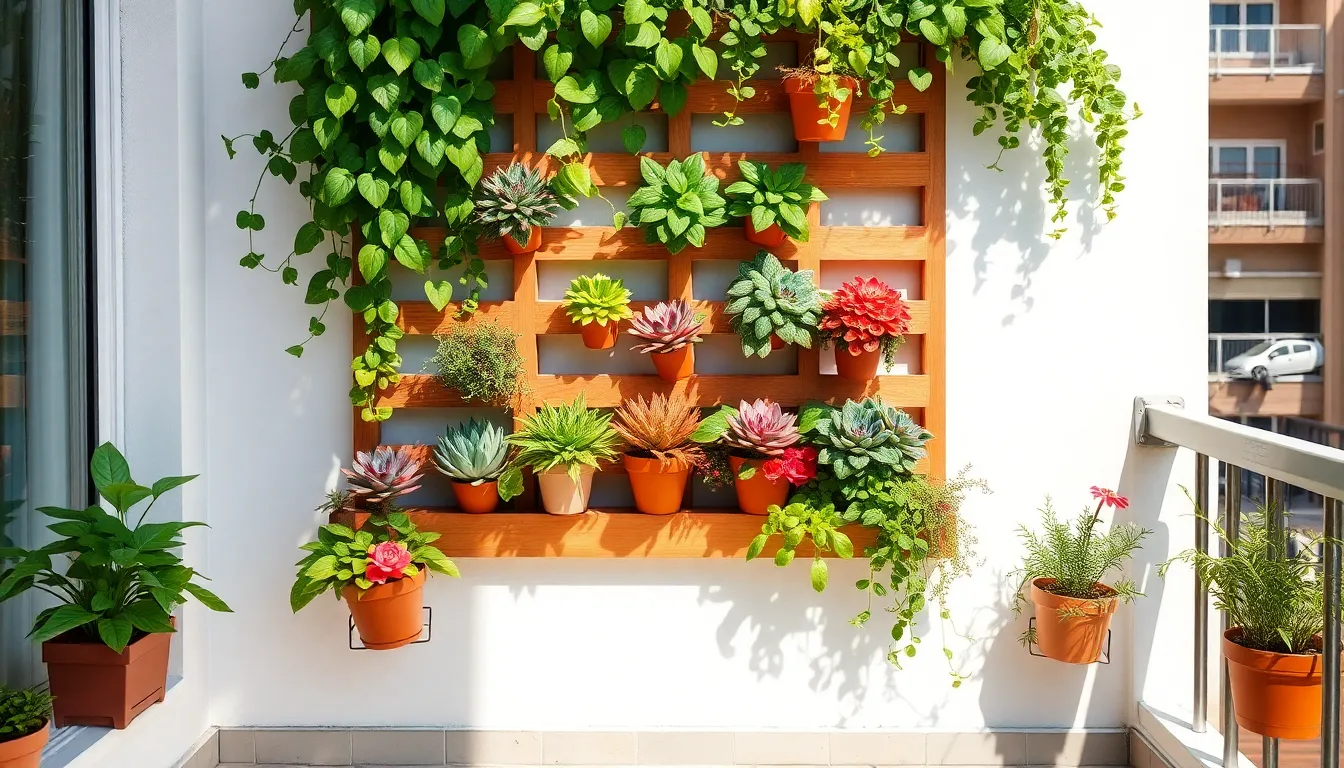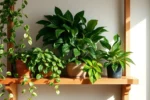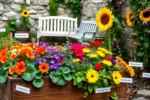Imagine transforming the smallest of spaces in your apartment into a lush, green oasis that not only invigorates your living area but also your spirit. Vertical gardening offers a wonderful opportunity for both novice and seasoned gardeners to explore the joys of growing plants without needing a traditional garden plot. Whether you’re dealing with a sunlit windowsill or a shadowy corner, vertical gardening can be as simple or sophisticated as you desire.
In this guide, you’ll discover the essentials of crafting a vertical garden tailored to your apartment’s unique environment. We’ll cover everything from selecting the right plants and materials to practical tips for ongoing care and maintenance. By the end, both beginners eager to start and experienced gardeners looking for a fresh challenge will have the tools to create a thriving vertical garden that suits their space and lifestyle.
Select Suitable Wall Space
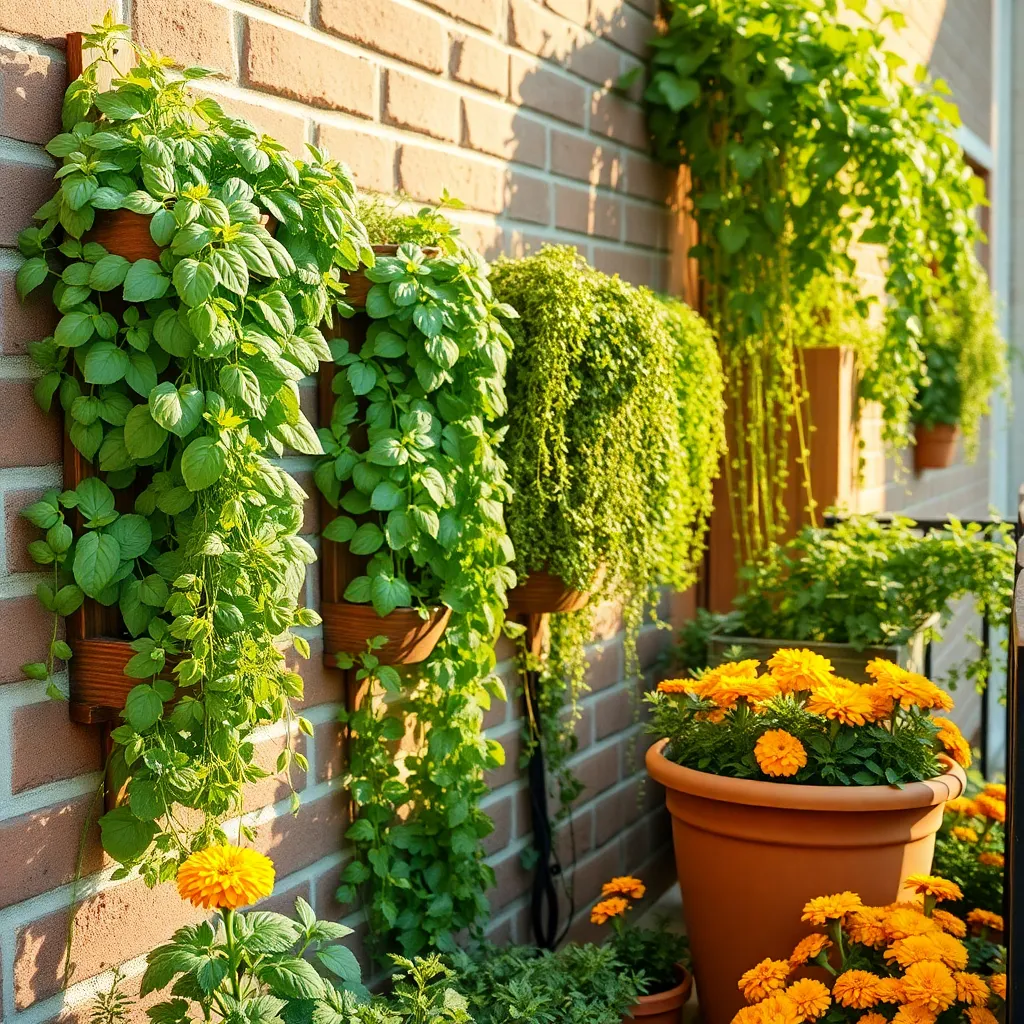
To begin selecting suitable wall space for your vertical garden, assess the natural light available in different areas of your apartment. Look for walls that receive at least 4 to 6 hours of direct sunlight if you plan to grow sun-loving plants like tomatoes or herbs.
Consider the structural integrity of your chosen wall, ensuring it can support the weight of your vertical garden setup. Use lightweight materials such as fabric pockets or modular panels to avoid putting too much strain on the wall.
Check for proximity to a water source, as this will make it more convenient to maintain your garden. Using a watering can or a hose with a gentle spray attachment can help you reach plants at different heights without much hassle.
For beginners, starting with easy-to-grow, low-maintenance plants like pothos or spider plants can be a great confidence booster. These plants thrive in various lighting conditions and require minimal care, making them ideal for vertical gardens.
Advanced gardeners might experiment with using hydroponic systems or automatic drip irrigation to optimize plant growth and reduce manual watering. These methods ensure consistent moisture levels, which are crucial for healthy plant development.
Choose Appropriate Vertical Planters
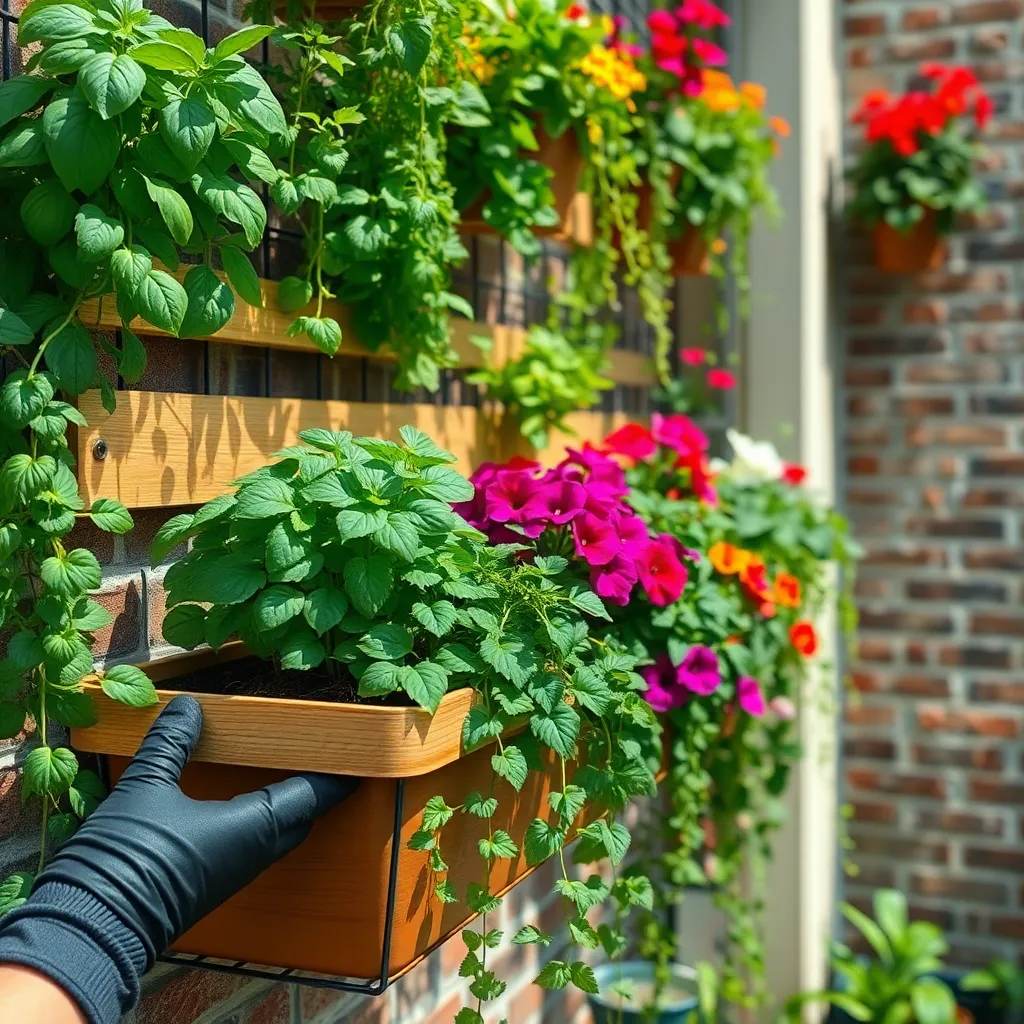
When choosing vertical planters for your apartment, consider the space available and the types of plants you want to grow. Wall-mounted planters are excellent for herbs and small leafy greens, allowing easy access and efficient use of space.
Opt for pocket planters if you’re looking to grow a variety of plants in one place. These fabric or felt pockets hold soil and plants, providing adequate drainage and aeration, which is crucial for healthy root development.
For a more decorative option, use hanging planters that can accommodate trailing plants like ivy or pothos. These planters not only maximize vertical space but also add an aesthetic appeal to your apartment garden.
Consider the material of your planters, as this can affect plant health. Plastic planters are lightweight and retain moisture well, while ceramic or clay options offer better breathability for roots.
Install Sturdy Support Structures
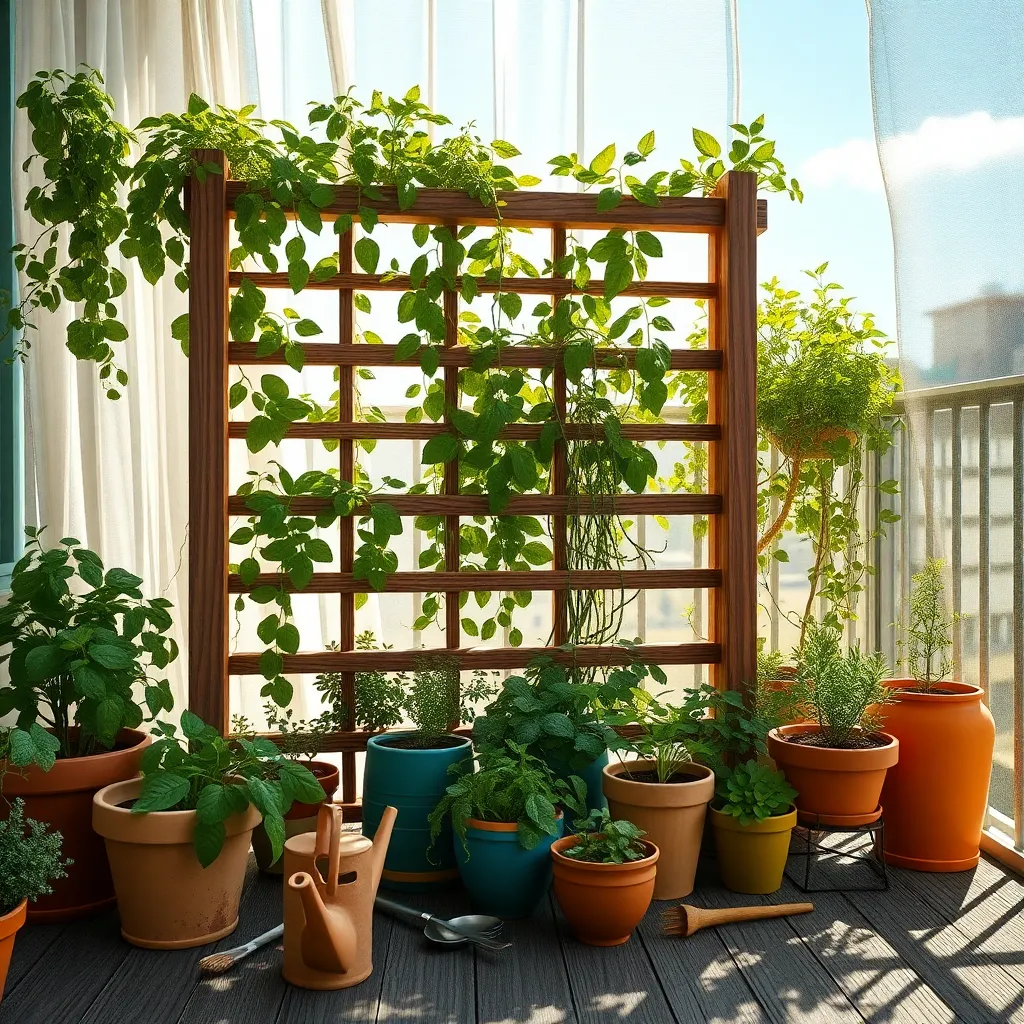
When building a vertical garden in your apartment, it’s crucial to install sturdy support structures to ensure your plants grow effectively. These supports can include trellises, wall-mounted grids, or tension wires that are securely anchored to your walls.
For beginners, starting with a simple trellis can provide the necessary support while being easy to install. Ensure the material you choose is durable and resistant to moisture to prevent decay, such as treated wood or metal.
Advanced gardeners might consider using a cable and eye hook system, which can support heavier plants and allows for more flexibility in plant arrangement. This system is ideal for larger climbing plants like tomatoes or cucumbers, which require substantial support as they grow.
It’s important to regularly check your support structures for signs of wear or instability, especially if you’re growing in a humid environment. Maintenance ensures longevity and the continued health of your plants, preventing any unexpected collapses.
Plant Suitable Indoor Varieties
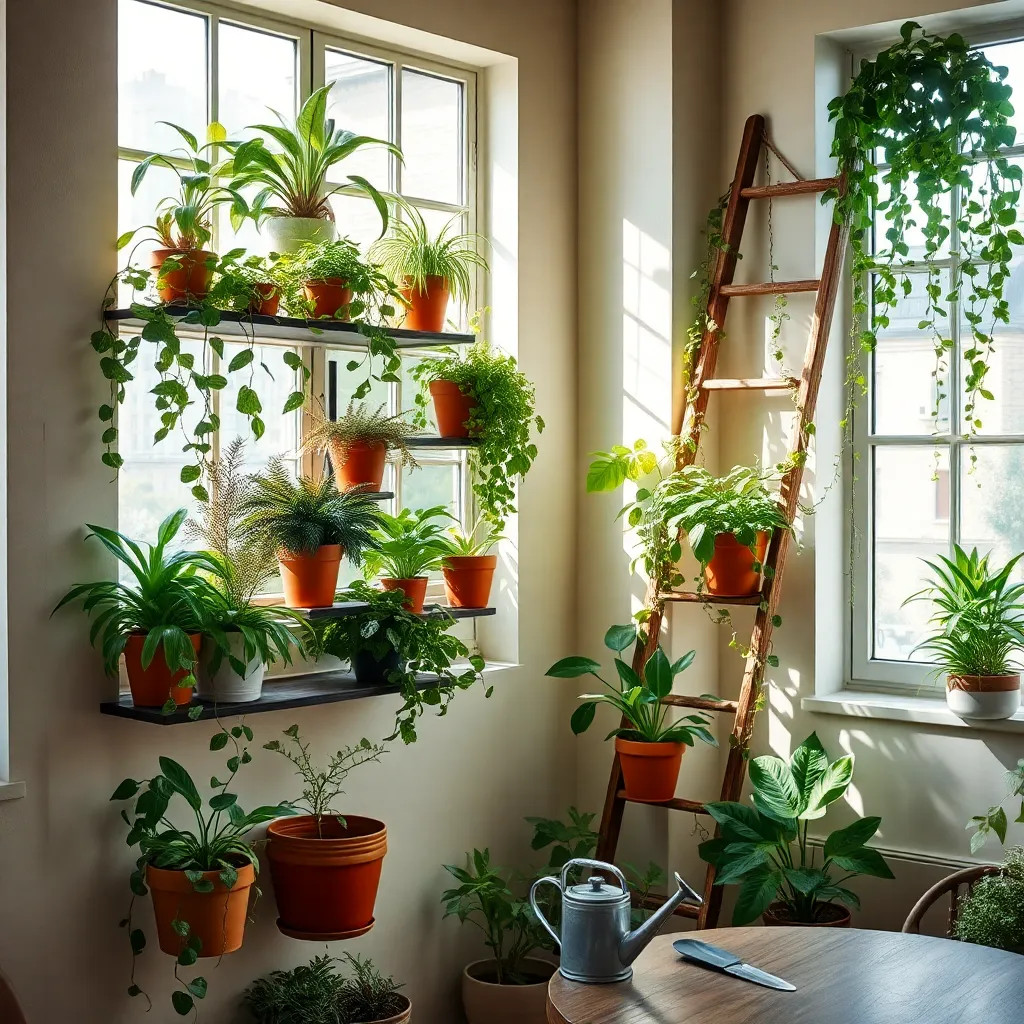
Choosing the right plants is crucial for a thriving vertical garden in your apartment. Opt for indoor-friendly varieties that can adapt to limited space and variable lighting conditions.
Herbs like basil, mint, and thyme are excellent choices as they thrive indoors and provide fresh flavors for your meals. These plants require well-draining soil and a consistent watering schedule, allowing the soil to dry slightly between waterings.
For those looking to add greenery without too much fuss, consider succulents such as jade plants or echeverias. These hardy plants require minimal watering—usually once every two weeks—making them perfect for busy urban dwellers.
If you want to introduce some color, flowering plants like African violets or peace lilies can brighten up your vertical garden. They prefer indirect light and should be watered when the top inch of soil feels dry to the touch.
Maintain Regular Watering Routine

Establishing a regular watering routine is crucial for the success of your vertical garden, especially in an apartment setting where environmental conditions can vary. To keep your plants thriving, consider the specific water needs of each plant species and adjust accordingly.
It is important to monitor the moisture levels in your soil, as vertical gardens can dry out more quickly than traditional setups. Use your finger to check the top inch of soil; if it feels dry, it’s time to water.
Consistency is key when it comes to watering, but so is flexibility. Depending on the season and indoor climate, you might need to increase or decrease the frequency of watering to maintain optimal plant health.
For beginners, a simple way to manage watering is to set a schedule, such as twice a week, and then adjust based on plant feedback and soil moisture checks. More advanced gardeners may use self-watering systems or moisture sensors for precise control.
Always ensure that your vertical garden setup has proper drainage to prevent waterlogging, which can harm plant roots. Consider using a potting mix designed for containers, as it typically provides better drainage and retains moisture effectively.
- Check soil moisture every few days and adjust watering frequency as needed.
- Consider grouping plants with similar water needs together to simplify care.
- Invest in a drip irrigation system for consistent moisture delivery with less effort.
By maintaining a regular watering routine and paying attention to your plants’ specific needs, you’ll create a flourishing vertical garden that enhances your apartment with lush greenery. Embrace the process and notice the subtle changes in your plants, as this will guide you in perfecting your care routine over time.
Conclusion: Growing Success with These Plants
As we wrap up our exploration of cultivating a vertical garden in your apartment, let’s reflect on the five key relationship concepts that can blossom alongside your greenery. First, understand that growth requires consistent nurturing—just as plants need water and sunlight, relationships thrive on attention and care. Second, communication is the trellis of any relationship; it supports and sustains. Third, diversity, like a varied garden, enriches your bond, bringing strength and resilience. Fourth, patience is vital; relationships, like plants, flourish over time. Finally, adaptability allows you to weather any changes that come your way.
To take immediate action, choose a small green project that you and your partner can start today, whether it’s planting a seed or discussing future relationship goals. This shared activity can strengthen your connection and provide a tangible reminder of your growth together.
Don’t forget to bookmark this article as your go-to guide for nurturing both your relationship and your vertical garden. As you look to the future, remember that every effort you invest in your relationship today sets the foundation for a flourishing partnership tomorrow. Empowered by these insights, you’re well on your way to cultivating a thriving, enduring connection.

